Recent 2022 Environmental, Social and Governance (ESG) Initiatives in Shipping (Part 1)
Recent 2022 Environmental, Social and Governance (ESG) Initiatives in Shipping (Part 1)
Ola and good day dear readers and IMSML fans. Welcome to the first Web Article for the International Malaysian Society for Maritime Law (IMSML), No.1 / 2022. The idea for this column is to produce concise, easy to understand articles on Maritime Law for stakeholders in the Maritime and Shipping World. By the way, I am Dr Irwin U.J. Ooi, Professor of Maritime and Shipping Law at the Faculty of Law, Universiti Teknologi MARA, Shah Alam. I hope that these series of articles will be useful to those in legal practice as well as stakeholders in various sectors of the shipping industry.
I will start the ball rolling with news which rarely makes the headlines as it is not glamorous as seizing the yachts of corrupt billionaires and putting it up for sale. On 7 April 2022, the Marine Department of Malaysia issue Malaysia Shipping Notice 02/2022 titled ‘Resolutions Adopted by the 77th Session of the Marine Environment Protection Committee (MEPC 77)’. This is a reminder to the maritime industry that there are 3 important International Maritime Organisation (IMO) resolutions that Malaysian shipping should pay attention to. First, new 2021 Guidelines for Exhaust Gas Cleaning Systems ( see Resolution MEPC.340 (77) ). Second, a fresh Strategy to Address Marine Plastic Litter from Ships ( see Resolution MEPC.341(77) ). Third, initiatives aimed at Protecting the Artic from Shipping Black Carbon Emissions (see Resolution MEPC.342(77) ). From a Malaysian perspective, arguably, the first two resolutions have a more direct impact on the Malaysian shipping industry.
This short Article deals with the first initiative.
Exhaust Gas Cleaning Systems (EGCS)
Whether burning marine diesel, low sulphur fuel oil (LSFO), or heavy fuel oil (HFO), ship engines will produce pollutants, in particular sulphur dioxide. Scrubbers are a part of the exhaust system that cleans the gas before it is emitted into the atmosphere. It is thus an important part of minimising the damage caused to the environment through the by-products. For easy to understand technical details, please refer to the Marine Insight webpage ( see https://www.marineinsight.com/tech/scrubber-system-on-ship/ , accessed on 18 September 2022)
The new standard of the limit for Sulphur content of fuel oil shall not exceed 0.50% m/m is now applicable for ships which have keel laid or are at a similar stage of construction from 1 June 2022. This initiative was adopted by Marine Environment Protection Committee of IMO pursuant to a revised MARPOL Annex VI which significantly strengthens the emission limits for sulphur oxides. In particular, Regulation 4 provides the criteria for the testing, survey, certification and verification of EGCSs.
On 26 November 2021, the Marine Protection Committee issued the 2021 Guidelines for Exhaust Gas Cleaning Systems (EGCS), by way of Resolution MPEC.340(77). The Guidelines apply to any ECGS that are applied to fuel oil combustion units, installed on a ship. (See Section 2.2.1). Note that shipboard incinerators are currently excluded from this system. The Guidelines are applicable to ECGS which have been installed on keels laid on or after 1 June 2022 (see Section 2.2.4).
These guidelines are stated to be ‘recommendatory in nature’ ( see Guidelines, Section 1.4) and not expressed as mandatory. However, as many maritime industry practitioners know, these minimum standards have a strange way of becoming the minimum standard of behaviour expected of industry (see https://www.imo.org/en/MediaCentre/HotTopics/Pages/oceans-default.aspx for examples of numerous IMO 'strategies' that are on the way of becoming 'binding' or are 'already binding'.) Plus the courts may also apply such guidelines as a necessary requirement of due diligence. Who can forget the approach of Judge Learned Hand in The T.J. Hooper [1932] A.M.C.1169, who held that a tug was unseaworthy for not having a radio receiving set on board, although no statute, regulation or custom mandatorily required one to be carried on board that vessel that point in history.
The Guidelines (Section 2.1.2) contain two schemes for the approval of ECGS. Scheme A is a certification system with in-service continuous operational parameter monitoring and periodic emission checks. By contrast, Scheme B is a continuous emission monitoring system by means of an approved monitoring system together with periodic operational parameter checks.
So what is the difference between Scheme A and Scheme B? In simple terms, Scheme A consists of performance tests, sea trials or other similar physical tests that verify that the system in service achieve the intended performance (see Section 2.1.2.1). In comparison, Scheme B provides for a continuous indication of 'Emission Ratio' which can be verified against an applicable limit (see Section 2.1.2.2).
Note that for both schemes, approval by the 'Administration' (ie the Marine Department in the context of Malaysia's IMO regulator) should be given. The monitoring system shall be documented (see Section 2.1.5). The operational details for Scheme A and Scheme B are found in Sections 4, 6, 7, and 8 of the Guidelines. A SOx Emissions Compliance Plan (SECP) is also part of the monitoring system (Guidelines, Section 2.1.6). The details for the SECP can be found in Section 9.
If you are interested in the nitty gritty operational compliance requirements of the system, check out the Marine Department's website at https://www.marine.gov.my/jlm/admin/assets/uploads/images/contents/20220408144621-b183a-resolution-mepc.340-77-.pdf (Accessed on 18 September 2022).
IMSML Website Article No.2/ 2022
Recent 2022 Environmental, Social and Governance (ESG) Initiatives in Shipping (Part 2): Addressing Marine Plastic Litter from Ships
Signing-off for today,
Dr Irwin Ooi Ui Joo, LL.B(Hons.); LL.M (Cardiff); Ph.D (Cardiff); CMILT
Professor of Maritime and Transport Law
Head of the Centre for Advocacy and Dispute Resolution
Faculty of Law
Universiti Teknologi MARA Shah Alam
Selangor, Malaysia
Note that I am the corresponding author for the IMSML Website Articles. My official email address is: uijoo310@uitm.edu.my
